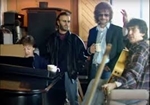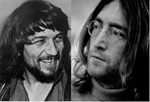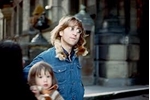- Register
- Log in to Tune-In
- Wishlist (0)
-
Shopping cart
(0)
You have no items in your shopping cart.
Beatles News

While nothing is confirmed, rumors of Gladiator II star Paul Mescal playing Paul McCartney in the upcoming Beatles biopics from Sam Mendes have surfaced.
During an interview with Mescal about Gladiator II, I asked him what he would ask McCartney if he met him in preparation for playing him in the biopics. “Oh god,” Mescal said, stammering. “How long is a piece of string?”
The somewhat sarcastic answer was followed up with, “I don't know specifically off the top of my head what I'd ask him — [it] depends on how much time you'd have.” As for his status in the Beatles biopics, Mescal kept it close to the vest. “I mean, I would love to be involved wholeheartedly,” he said. “You could pick any moment from any of those characters' lives, and you would have a very, very interesting film.”
However, he did seem to slip up, saying he is “so curious to see who's going to be involved and what those scripts are going to look like” before adding “fundamentally” to the end of his sentence.
Maybe Mescal is not waiting on scripts, but it sure sounded like it. We will have to wait and see if the Aftersun star gets annou details

The way that the three remaining Beatles got a handle on the strange vibe of being in a studio together again without John Lennon in 1994 was to pretend he was actually part of the session and had just nipped out. “We just pretended that he’d gone home on holiday,” Paul McCartney said in a press conference at the time, “as if he said, ‘Just finish it up, I trust you’.”
This was how McCartney, George Harrison and Ringo Starr – dubbed The Threetles – approached the making of Free As A Bird, which came out in early December, 1995. They weren’t strictly a trio making their first music as The Beatles since Lennon’s death, though. Working on a creaking old demo recorded onto a cassette by John Lennon – one of four that the remaining members were given by Yoko One – the band realised that they needed to bring in an outside influence to help them get the song to the finish line when they entered the studio in early 1994. That man was ELO’s Jeff Lynne.
“It was George who said we need a producer, it could be dangerous just to all go in the studio, it could get nasty cos you’ve got egos flying around, surprisingly,” recall details

The Beatles have just revealed some new collectibles that fans are going to want to get their hands on.
The first is a new limited-edition solid silver submarine to celebrating the band’s iconic 1968 film Yellow Submarine. Only 4,000 will be available, made of almost 1 ounce of pure silver. More Yellow Submarine collectibles are expected in 2025, including a set celebrating the members of the band.
The silver Yellow Submarine collectible will be available for preorder starting in mid-December.
But that’s not all: As part of the continuing celebration of the 60th anniversary of The Beatles coming to America, a new collection of commemorative concert tickets is being released.
The set is made up of 25 tickets, one for each venue they played during their first tour of the U.S. and Canada in 1964. Each ticket is made from an ounce of pure silver and contains the date, venue and price of each show. The tickets also feature some unique details for each gig.
Only 1,964 copies of each ticket will be made available, with the first dropping on Feb. 7, which happens to be the day The Beatles landed in America.
Source: ruralradio.com

They may not have had quite as bountiful of a vault as for the All Things Must Pass anniversary edition, but the George Harrison estate and Dark Horse Records had no shortage of, well, material in putting together the new 50th anniversary edition of George Harrison’s fourth solo (and second post-Beatles) album, Living in a Material World.
The expanded two-disc set, which was curated by Harrison’s widow Olivia and son Dhani, is part of an expanded deal with BMG that Dark Horse signed last year. Out Friday (Nov. 15) with a new mix by Grammy Award-winning engineer Paul Hicks; in addition to the 11 original tracks that came out on May 30, 1973, a second disc (on LP and CD) includes an outtake of each song as well as two rarities, “Miss O’Dell” and, on CD only, the unreleased “Sunshine Life For Me (Sail Away Raymond)” (which Harrison contributed to Ringo Starr’s 1973 album, Ringo, and recorded with Starr and members of The Band). The package also includes a 60-page hardcover book featuring previously unseen images and memorabilia from the period.
“We’re going in chronological order,” Dhani Harrison, Dark Horse’s CEO, tells Billboard about the est details

Disney+ has struggled to craft hits outside of its already established brands of Marvel and Star Wars, and more recently, the additions of Bluey and Doctor Who. However, one subject does seem to bring in eyeballs, even though it's a bit random for the House of Mouse: The Beatles, The Original British Boy Band from the 1960s are now considered rock deities. Disney+ scored its first non-Star Wars/Marvel hit in 2020 with Peter Jackson's Get Back and then drew in audiences again with the remastered Let It Be (which Get Back drew from). Disney is a company that doesn't mess with success, so it's not surprising that the streaming service scooped up Martin Scorsese's new Beatles documentary, Beatles '64, which, like Get Back, will arrive in time for the American Thanksgiving holiday.
The new film focuses on The Beatles’ first visit to America and boasts of having "never-before-seen footage of the band and the legions of young fans who helped fuel their ascendance." It also includes rare footage from documentarians Albert and David Maysles and live performances from The Ed Sullivan Show and The Beatles' first American concert at the Washington, DC Coliseum. Plus, the last two living Beatles, Paul McCartney and Ringo Starr details

Meat Free Monday, the vegetarian campaign Paul McCartney helped launch, is offering fans of the Beatles legend the chance to win tickets to two of his forthcoming concerts in the U.K.
Winners of the prize draw will be able to choose a pair of tickets to one of McCartney’s two shows at either Co-op Live in Manchester (December 14 or 15) or The O2 in London (December 18 or 19). For a chance to win, fill out the form at MeatFreeMonday.com.
The contest closes at midnight Greenwich Mean Time on Sunday, November 17 (7 p.m. ET on Saturday, November 16). Travel and accommodations are not included.
McCartney, a longtime vegetarian, teamed up with his daughters Mary and Stella to launch Meat Free Monday in 2009. The initiative encourages people to abstain from eating meat at least once during the week.
Meat Free Monday has a stand set up at all stops of McCartney’s Got Back World Tour to raise awareness about the campaign.
McCartney’s Was Interviewed About His Eating Habits on Tour. Meanwhile, Meat Free Monday recently posted an interview with McCartney in which he revealed details about his eating habits while he’s on the road.
The 82-year-old rock legend explained tha details

Ringo Starr has addressed The Beatles' enduring popularity as he issued his verdict on Paul McCartney's world tour. Ringo, 84, and Paul, 82, remain good friends more than 50 years after The Beatles went their separate ways.
Paul is currently taking his 'Got Back' tour around the world and is in the middle of a run of three gigs in Mexico City, having played a number of concerts in many cities across Central and South America over the past few months. The tour will arrive in Europe next month, including two nights at Manchester's Co-op Live and two at The O2 in London.
In an interview with Vice published earlier this week, Ringo spoke about the band's everlasting appeal and how that is exemplified by Paul's sell-out tour. Asked about the generations of Beatles fans who were born after the band split up, the legendary drummer said: “I think it’s great. I mean, since we had the first new-coming musicians and bands and that in the ‘70s, the kids all like to listen to The Beatles, it seems.
"Every generation we get another crowd - they’re still playing us on radios and kids and musicians are still interested in what we did. That is so great. "Now, whatever it means streaming, but The Beat
details

John Lennon’s eldest son, Julian, admitted that his relationship with his father was not ideal. Julian grew up during Beatlemania, watched his parents’ marriage crumble, and then went years without speaking to his dad. When Julian was just 8 years old, Lennon moved to the United States and effectively broke contact with his son. Julian shared how this felt.
John Lennon’s son said he didn’t have a good relationship with his father
In 1971, Lennon’s ex-wife, Cynthia, learned through the news that Lennon moved to the United States. He decided that Cynthia should discuss Julian with Yoko Ono and went for three years without seeing or speaking to his young son. Julian said this was hard to handle as a child.
“I know that Dad was an idol to millions who grew up loving his music and his ideals. But to me he wasn’t a musician or a peace icon,...
Source: Showbiz Cheatsheet
details

The Beatles have said they are "thrilled" after receiving two Grammy nominations. The nominations for the 2025 awards were revealed last week and the band is in the running to win record of the year and best rock performance for their track 'Now and Then'.
Released last November, 'Now and Then', featured cleaned-up John Lennon vocals from the 1970s and 1995 guitar recordings from George Harrison alongside new work from Paul McCartney and Ringo Starr. John's vocals are taken from a demo recorded at his home in New York’s Dakota Building, which Yoko Ono passed to the rest of the band in 1994.
At that point, technological limitations prevented John’s vocals and piano playing from being separated to achieve the clear, unclouded mix needed to finish the song. However, the release of Peter Jackson's Disney+ documentary 'Get Back' led to the idea of the track's release being brought back to the table.
Advances in technology enabled the isolation of John's vocals and playing. The song also includes electric and acoustic guitar recorded in 1995 by George, a new drum performance from Ringo’s, and bass, guitar and piano from Paul, which matches John’s original playing. Paul and Ringo also re details

Towards the end of the Beatles’ career, it would’ve been hard to imagine George Harrison had much good to say about his time with the band. He, like his other bandmates, was burnt out to the point that calling one of the biggest bands of all time quits seemed like a good option. Nevertheless, he eventually looked back on his time being “fab” with softer eyes. Uncover the meaning behind “When We Was Fab,” below.
Back then long time ago when grass was green
Woke up in a daze
Arrived like strangers in the night
Harrison released this track in the late ’80s, delighting many Beatles fans for the mention–even if it was slightly covert. Harrison recalls his time with the band and likens it to the idealist view of grass being greener on the other side. Though Harrison’s music career was still up and running, it didn’t evoke the exact same mystique that the Fab Four did.
And while you’re in this world
The fuzz gonna come and claim you
But you mo’ better wise
When the buzz gonna come and take you away
Take you away, take you away
Overall, this song has a positive tone to it. Though it’s a bit tongue- details

The Beatles could swell their pretty small collection of Grammy trophies.
The Beatles definitely have no need for gongs and baubles, with their back catalogue and cultural impact more than speaking for itself.
It's always nice to be recognised though, and after it stormed the charts around the world on its release last year it's no surprise that the Fab Four's 'Final Song' 'Now and Then' has been nominated for the 2025 Grammy Awards. Bigger than Jesus? What actually happened with The Beatles' most controversial moment
The song was 45 years in the making. An original John Lennon recording was given to the then-surviving Beatles by Yoko Ono in the early 1990s as they assembled their Anthology project.
While the "Threetles" of Paul McCartney, George Harrison and Ringo Starr completed recording on the Lennon songs 'Free As A Bird' and 'Real Love', they abandoned work on 'Now and Then', in part because of the technical limitations of the time.
After several hints over the years, the advances in de-mixing technology used during the Get Back documentary series meant that McCartney and Starr could finally finish off the song, which was finally heard on November 2, 2023.
Source: Maye details

At times, fame can get in the way of a creative pursuit. The audience’s expectations are proportionate to the amount of fame an artist can amass, potentially leaving that artist in fear of disappointing their listeners. If the Beatles’ fame was unprecedented, then the expectations put on them were equally so. Towards the middle of their career as a group, the band felt stagnant, unable to flex their creativity. All that changed when they made Sgt. Pepper’s Lonely Hearts Club Band. Find out why the creation of that album was so freeing for the Fab Four, below.
The Beatles assumed characters while making Sgt. Pepper’s Lonely Hearts Club Band. The concept record saw them create under a new banner. In return, their music benefitted from the freedom of “not being the Beatles.” According to Paul McCartney, they found a new stride while writing this record that revamped their love for making music.
“Over our meal we were talking about salt and pepper which was misheard as Sgt. Pepper,” McCartney once wrote. “I then had the idea for the song ‘Sgt. Pepper’s Lonely Hearts Club Band’ and thought it would be interesting for us to pretend, during the mak details

Music has an interesting way of making opposites attract. Whether it be a mutual fondness for the same song or a respect for another person’s talent or taste, music has the power to bring people together in a way no other means does. That being so, it unexpectedly brought together two iconic musicians and created a relationship worth mentioning. The relationship in question is between Waylon Jennings and John Lennon.
On the surface, Lennon and Jennings couldn’t be farther apart on the musical and general life spectrum. One dude is an outlaw country singer from Texas and the other dude is a pop rocker from England. In a way, you might have a better chance of making a dog and a cat get along. However, throw all of these face-value judgments aside, as when Lennon and Jennings met they took quite a liking to each other.
Even though the two resided in different genres, they were of similar age. Thus, they surely shared some of the same musical influences such as Buddy Holly, Elvis Presley, and Little Richard. Although, their first interaction and newfound relationship had nothing to do with music. Rather, they just liked each other as good-humored dudes with a similar edge.
Source: Peter Burditt/ details

The Beatles legend Sir Ringo Starr has announced his first full-length album in six years, which is a country record produced and co-written by T Bone Burnett
Despite having to cancel the remainder of his US tour due to health issues and nearing his 85th birthday, Sir Ringo Starr is not letting anything slow down his creative output. The Beatles drummer has been releasing a few EPs recently, but he's now announced his first full-length album in six years.
Donning a cowboy hat, the Liverpool native is embracing his inner cowboy with Look Up, an album produced and co-written by T Bone Burnett. Set to drop on January 10, 2025, Sir Ringo lends his voice and drumming skills to all 11 tracks, and even co-wrote the closing song Thankful, which features Alison Krauss.
The first single, Time On My Hands, is available now for streaming.
Source: George Simpson/themirror.com
details
John Lennon won Grammys both as a member of The Beatles and as a solo artist. He collected several prizes during his lifetime, and perhaps even more following his death. The rocker is nominated again this year, as is one of his two children.
Sean Ono Lennon has been nominated for his first Grammy, and he joins his family tradition in the honor. The youngest son of the late musician is up for Best Boxed or Special Limited Edition Package, which is awarded to the art directors who produced a physical product that stands out as especially inventive or creative. The musical act that wrote and recorded the work is not necessarily nominated, unless they also played a role in the art direction.
Sean is nominated for the work he did on the recent re-release of his father’s album Mind Games. The set was shared again earlier this year as a deluxe collectible box set that features half a dozen CDs.
Lennon’s youngest son, whom he shared with wife Yoko Ono, is a first-time nominee at the 2025 Grammys. He’s up for the specific category alongside Simon Hilton, and the two will share the award, should they win.
Sean is the second of Lennon’s children, and both have now been nominated for details
